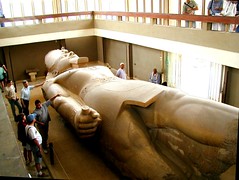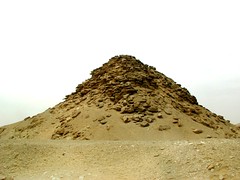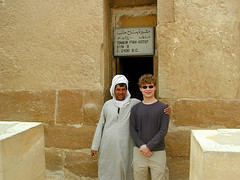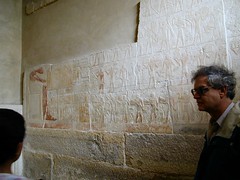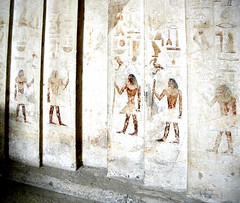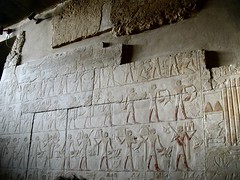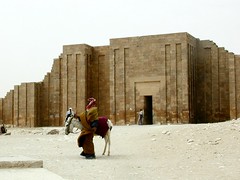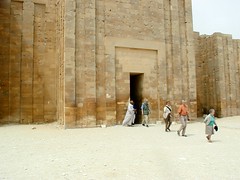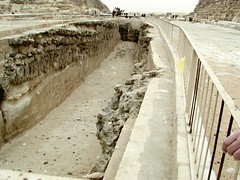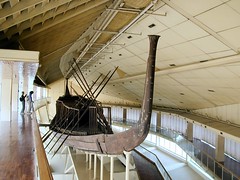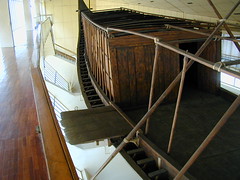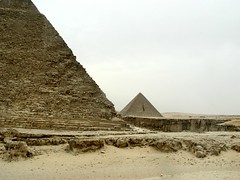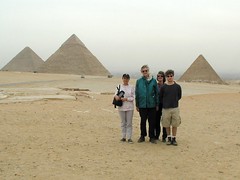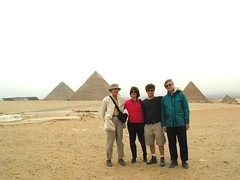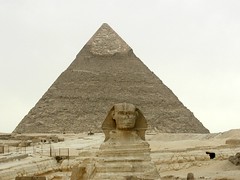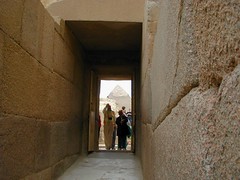Gerard M. Foley
Travel & Photography Collection
Egypt
My son and his wife, both professors, spent several months this spring in Rome, Italy. My daughter-in-law, a classicist, wanted to take the opportunity to visit Egypt. Their son and I were lucky enough to go too. We began early April, 2001.
My friends Ruth and Fritz Saenger put us in touch with their granddaughter Katherine, who was visiting her husband Don Sparks in Egypt. By e-mail Katherine introduced us to Presidential Nile Cruises. PNC provided us with an excellent itinerary, comfortable accomodations and very pleasing and competent guides and drivers thoughout our stay in Egypt. You are advised, however, to deal with PNC through a travel agent outside Egypt, as communication, except by voice telephone, is not reliable.
We first drove to Memphis, about twenty miles south of Cairo on the West bank of the Nile.
I took almost all of these pictures with an Olympus C2020Z digital camera. Those on the West Bank at Luxor were by Nico Foley, my grandsonm with his father's Canon A50
Most Egyptian reliefs and sculptures were painted, and the paint has often survived. Men were usually painted red, and women white.
The Step Pyramid, the first pyramid built in Egypt,.was built in Dynasty III for King Zoser. This modification of the mastaba attempted (unsuccessfully) to prevent looting of the tomb, already common in the earliest dynasties.
GIZA
This city, just west of Cairo, is world-famed for the three great stone pyramids, the Sphinx, and numerous other works of the IVth Dynasty.

The pyramid of Khefren, slightly smaller than the Great Pyramid of Khufu. From most places it looks the larger of the two, because it stands on higher ground. At the top of this pyramid some of the facing stone, which once made a smooth covering of all the great stone pyramids, survives. The facing stone has been stripped for building material from all the other pyramids. Khefren was probably Khufu's son.
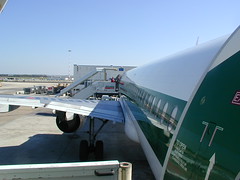
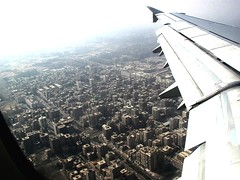
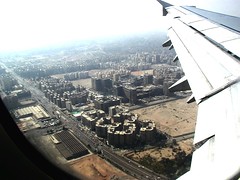
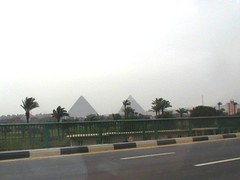
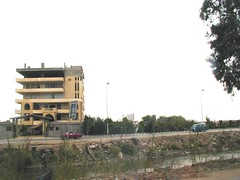
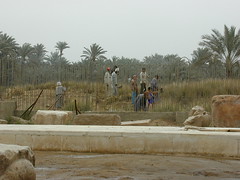
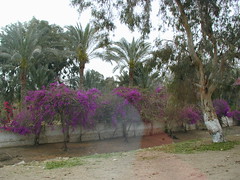
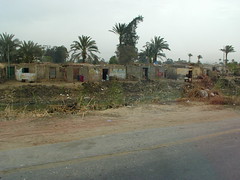
![[Click to go to flickr]](http://farm4.static.flickr.com/3004/3106562869_2bda08936b_m.jpg)
